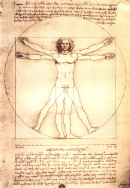Chess Principles Introduction: Unterschied zwischen den Versionen
Matt (Diskussion | Beiträge) |
Matt (Diskussion | Beiträge) Keine Bearbeitungszusammenfassung |
||
| (2 dazwischenliegende Versionen desselben Benutzers werden nicht angezeigt) | |||
| Zeile 20: | Zeile 20: | ||
Hints | |||
'''<u>Hints</u>''' | |||
Avoid moves that lead to the opponent develop its pieces in or improve its position | Avoid moves that lead to the opponent develop its pieces in or improve its position | ||
| Zeile 29: | Zeile 30: | ||
* With knight on f8 there is no mate, with knight on f1 there is no fun | * With knight on f8 there is no mate, with knight on f1 there is no fun | ||
* For the first move as black just mirror what the opponent is doing | * For the first move as black just mirror what the opponent is doing | ||
* Do not block your d- and e-pawns in the opening by placing a piece in front of them, because this would limit your use of your bishops (if they were not moved otherwise) | |||
== Notable Tactical Positions == | == Notable Tactical Positions == | ||
| Zeile 75: | Zeile 77: | ||
Rooks are endgame pieces. In the middlegame a knight and a bishop are more valuable than a rook and a pawn | Rooks are endgame pieces. In the middlegame a knight and a bishop are more valuable than a rook and a pawn | ||
Wihen opponent attacks with a bishop on b3/b7 or g3/g7 Tage with the edge pawn towards the center. This keeps the pawns together. | |||
=== 1000 - 1800 ELO === | === 1000 - 1800 ELO === | ||
Aktuelle Version vom 28. Juni 2025, 17:40 Uhr
This article is an introduction into Chess principles during the different stages of the game.
The Opening
The opening is considered complete, when the rooks are connected.
10 Rules for the Opening
- Develop: Use all pieces for your game
- Develop: Improve position by expanding it
- Develop: Bring out minor pieces
- Control the center by attacking it
- Never move a piece twice within first 10 moves
- Castle the King early, meaning within first 10 moves if not within first 7 moves
- Don't bring out the Queen before all minor pieces are developed and the King is castled.
- Develop pieces with a purpose
- Think about your opponents moves and threads
- Connect the rooks
These are not necessarily the best moves, but these are solid principles to achieve a good position without memorizing openings.
Hints
Avoid moves that lead to the opponent develop its pieces in or improve its position
0 - 1000 ELO Opening Principles
- Develop knights before bishops
- With knight on f8 there is no mate, with knight on f1 there is no fun
- For the first move as black just mirror what the opponent is doing
- Do not block your d- and e-pawns in the opening by placing a piece in front of them, because this would limit your use of your bishops (if they were not moved otherwise)
Notable Tactical Positions
Position Pawn, Bishop or Queen opposite to the opponents knight in order to limit his moves.
Prevent being taken by knight immediately by moving to diagonal location with 1 square between. This way the opposing knight needs three moves to take your piece
A Fianchettoed bishop cannot easily be attacked by a rook or a knight, only by the same squared bishop
The Middlegame
0 - 1000 ELO
Did opponent create any weaknesses?
ist? there a check mate?
Defend, improve your position, attack free pieces
Do a blunder check before each move: Check King, Queen, Knights, Bishops, Rooks
Defending
Don't forget en passant (as defender as well as attacker)
Improving position
Wehere are weak positions of the opponent near his king?
Attacking
Only attack, if you come out on top. Do you have more attackers than the opponent has defenders?
If there is a defender, maybe you are able to take the defender or make him move?
Find all potential moves and go through all options and try to find out, which looks the best.
When you are ahead in terms of pieces taken trading pieces is good, because it brings you closer to the end game.
You can only do meaningful attacks, when you have enough pieces
Hints
Avoid double isolated pawns, if possible
Pawns cannot move backwards, so moving them introduces weaknesses. Backwards pawn on a pawn chain is the weakest pawn
Rooks are endgame pieces. In the middlegame a knight and a bishop are more valuable than a rook and a pawn
Wihen opponent attacks with a bishop on b3/b7 or g3/g7 Tage with the edge pawn towards the center. This keeps the pawns together.
1000 - 1800 ELO
- Don't trade pieces or Queens if you are behind.
The Endgame
Tactics in the Opening
- e4, d4
- Play exd5
